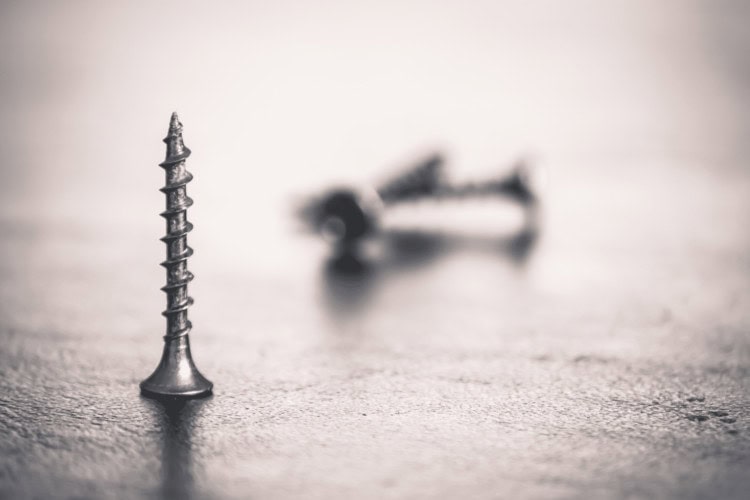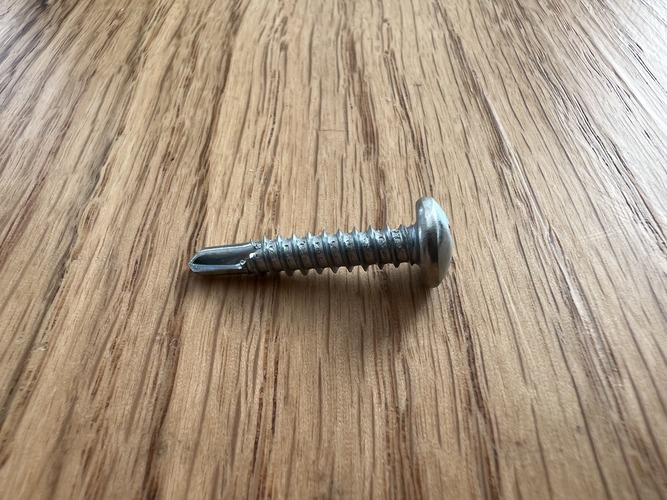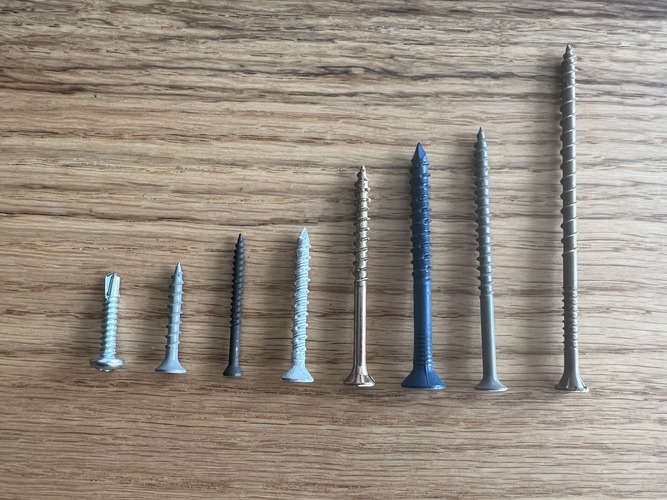
Plywood is a cornerstone in the world of DIY, woodworking, and construction. Its versatility, strength, and affordability have made it a favorite material among professionals and hobbyists alike. Choosing the Best Screws for Plywood projects can be the deciding factor in your project being a success or failure.
Whether you’re crafting a custom piece of furniture, building cabinetry, or working on a detailed craft project, plywood offers a reliable foundation that can adapt to a wide range of applications. However, the success of your plywood project doesn’t rest solely on the quality of the plywood itself. The right type of screws you choose to hold your project together play an equally critical role in determining the durability and stability of your work.
It’s a common misconception that any screw will do when working with plywood. In reality, the type of screw you select can have a significant impact on the final outcome of your project. Factors such as screw length, diameter, material, and thread type all contribute to how well the screws will perform in securing the plywood to other materials. Using the wrong type of screw can lead to weak joints, potential splitting of the wood, and a structure that may not withstand the test of time.
This comprehensive guide is to help you take the guesswork out of selecting the best screws for plywood. It’s time to explore the different types of screws that are best suited for plywood. Dive into the key factors you need to consider when making your choice, and provide practical tips to help you avoid common mistakes.
By the end of this guide, you’ll have the knowledge and confidence to choose the right screws for any plywood project and the specific applications. Ensuring that your work is not only structurally sound but also built to last.
Understanding Screw Types and Their Uses

1. Wood Screws
Wood screws are a staple in any woodworker’s toolbox. They are arguably the most popular choice screws when working with plywood. These standard wood screw are specifically engineered to work with wood. They feature a tapered body that gradually narrows from the head to the tip. This design allows the screw to pull the pieces of wood tightly together as it is driven in, ensuring a secure and firm hold.
The threads on wood screws are typically coarse-thread screws. They are widely spaced threads, which helps in gripping the wood fibers effectively. This wide thread provides the necessary shear strength holding power, preventing the plywood from loosening over time.
Wood screws also often have a sharp, pointed tip that allows for easy penetration into the wood. This reduces the need for excessive force when driving them in. This sharp point is particularly beneficial when working with softer woods or when quick assembly is required.
However, it’s important to note that while wood screws are versatile. They perform best when used with a pilot hole—especially in thinner plywood. Pre-drilling pilot holes not only makes it easier to drive the screw but also minimize the risk of plywood splitting. Which can compromise the strength and appearance of your project.
Best For: General woodworking and joining plywood to other wood types.
Tip: Pre-drilled holes can be the best way in preventing splitting, especially in thinner plywood.

2. Drywall Screws
Although drywall screws are primarily designed for fastening drywall sheets to studs. They can also be used in plywood projects under specific circumstances. Drywall screws are characterized by their thinner diameter and fine thread design. This is made this way to pass through the drywall without damaging it.
However, this thin diameter also means that drywall screws are more brittle compared to wood screws. Making them less suitable for heavy-duty applications.
When used with plywood, drywall screws should be reserved for light-duty tasks where the load is not significant. Their thin profile can make them a good option for projects where you want to minimize visible holes or when working with particularly delicate materials.
Additionally, drywall screws are often more affordable, making them a budget-friendly option when cost is a concern. However, it’s important to be cautious with their use, as their brittleness means they can snap under too much pressure or in situations where the plywood is subjected to high stress.
Best For: Light-duty applications and when cost is a concern.
Tip: Use drywall screws when you need a quick, budget-friendly option, but avoid them for heavy-duty or outdoor projects.

3. Self-Tapping Screws
Self-tapping screws also known as Self-Drilling Screws are a versatile choice for those looking to streamline their assembly process. As the name suggests, these screws are designed to tap or create their own threads as they are driven into the material. This feature eliminates the need for pre-drilling a pilot hole. Which can save time and effort, particularly in larger projects or when working with hard-to-reach areas.
They are especially useful when working with plywood in combination with other materials, such as metal or plastic. Their ability to cut threads into harder materials makes them an excellent choice for projects that require a strong and secure hold without the added step of pre-drilling.
However, it’s crucial to ensure that the screw is aligned correctly before driving it in. Improper alignment can damage the plywood or the underlying material.
Best For: The Better Choice for Projects requiring a strong hold without pre-drilling.
Tip: Use self-tapping screws for a faster assembly process. But also ensure the screw is aligned properly to avoid damaging the edge of the plywood.

4. Deck Screws
Deck screws are designed with outdoor projects in mind and are engineered to withstand the rigors of exposure to the elements. These screws are typically made from corrosion resistance materials, such as stainless steel, or are coated with protective finishes like epoxy or zinc. This makes them highly resistant to rust, moisture, and other environmental factors that could otherwise compromise the integrity of your project.
When working with plywood in outdoor settings, such as in garden furniture, outdoor structures, or decking, deck screws are an excellent choice. Their robust design ensures that the plywood remains securely fastened, even in the face of fluctuating temperatures, humidity, and precipitation.
Additionally, deck screws often feature a larger head, which helps distribute the load more evenly across the surface of the plywood. Reducing the risk of the screws pulling through the material.
Best For: Outdoor plywood projects where moisture resistance is needed.
Tip: Choose deck screws for any project where longevity and resistance to weather are priorities.
Key Factors in Choosing the Best Screws for Plywood

Screw Length
The length of the screw is essential for ensuring it holds the plywood securely to the supporting material. A screw should penetrate at least half the thickness of the base material.

Screw Diameter
The diameter impacts the holding strength and the risk of splitting the plywood. Generally, thicker screws offer more holding power, but they may require pre-drilling to avoid splitting.

Screw Material
Choose screws based on the environment where the plywood will be utilized. Stainless steel or coated screws are ideal for outdoor projects due to their resistance to rust and corrosion.

Thread Type
Coarse threads are better for softer plywood, as they provide a stronger grip. Fine-thread screws are suitable for harder plywood or when working with thinner sheets.
Common Mistakes to Avoid
- Using the Wrong Length: Ensure the screw is long enough to penetrate the plywood and the material underneath without protruding too much.
- Skipping Pre-Drilling: Always pre-drill when working with thinner plywood sheets to prevent splitting.
- Ignoring the Environment: Use coated or stainless steel screws for outdoor projects to prevent rust and deterioration.
PRO TIP: To really make sure your plywood project stands the test of time. Wood glue all permanent joints in any of your woodworking projects for a strong hold for many years to come.
Let’s wrap this up…
Selecting the best screws for plywood is more than a matter of convenience. Your choice directly impacts the strength, durability, and longevity of your entire project. Throughout this guide, we emphasize the importance of understanding the various types of screws—such as wood screws, drywall screws, self-tapping screws, and deck screws—and how to match each type to its ideal application.
Armed with this knowledge, you can approach your next plywood project with the confidence that you’re using the right tools for the job.
Beyond just choosing the right type of screw, it’s vital to pay attention to details like screw length, diameter, material, and thread type. These factors might seem small, but they make a significant difference in how well the screws will perform in securing your plywood. Particularly in different environments and under various conditions. For instance, opting for coated or stainless steel screws in outdoor projects can prevent rust. Ensuring that your work stands strong against the elements for years to come.

Avoiding common mistakes, such as using screws that are too short or skipping the pre-drilling process. Can save you from unnecessary frustration and ensure that your project doesn’t suffer from weak joints or split plywood. The time you invest in carefully selecting and using the right screws. Will be reflected in the quality and durability of your finished product.
Don’t underestimate the impact of choosing the right screws for your plywood projects. Whether you’re working on a small DIY project or a large-scale construction task. The right screws can make all the difference in achieving professional-quality results.
By investing in the proper screws and taking the time to understand their application. You’re setting yourself up for success, with projects that not only meet but exceed your expectations. With the right screws in hand, your plywood creations will be both strong and enduring. Truly standing the test of time.
If or when you decide to tackle your next project with the Best Screws for Plywood. I’d love for you to tag us on Instagram. So I can see your really fun recipes and DIY projects come to life!
COZY HOME, COZY RECIPES:
Every cozy home deserves amazing recipes, and it’s even better when those recipes are both delicious and healthy. Our goal is to provide tasty meals that are easy to make, regardless of your skill level.
Fast, easy meals leave more time for fun activities, making your home a hub of joy and good food.
CONNECT WITH US:
As always, we love hearing about your experiences with our “Best Screws for Plywood: A Comprehensive Guide”. Reach out to us through our social channels. Any questions you have, we’re here to answer.
Stay updated by joining our newsletter, offering a monthly dose of new recipes and a first look at upcoming projects.
MORE COZY KITCHEN RECIPES:
If you’re hungry for more, explore our collection of Cozy Kitchen Recipes. Another healthy favorite is the “Sausage Potato Veggie Bake.” Find these recipes and more here.
DIY RESOURCES:
For additional resources, check out our DIY Tutorials, offering a wealth of information to enhance your home improvement skills.